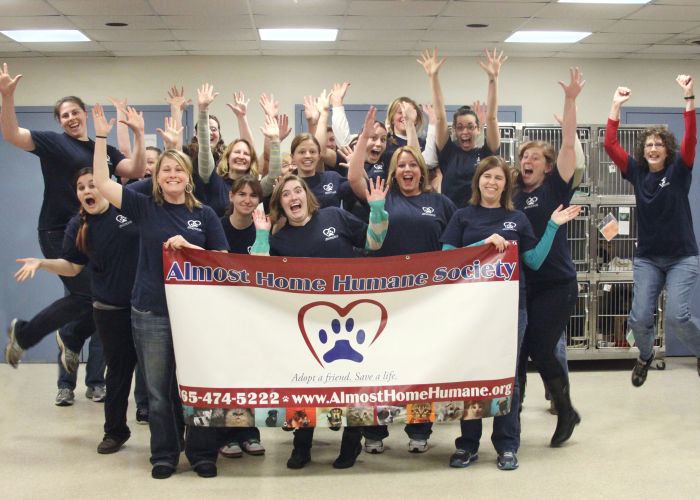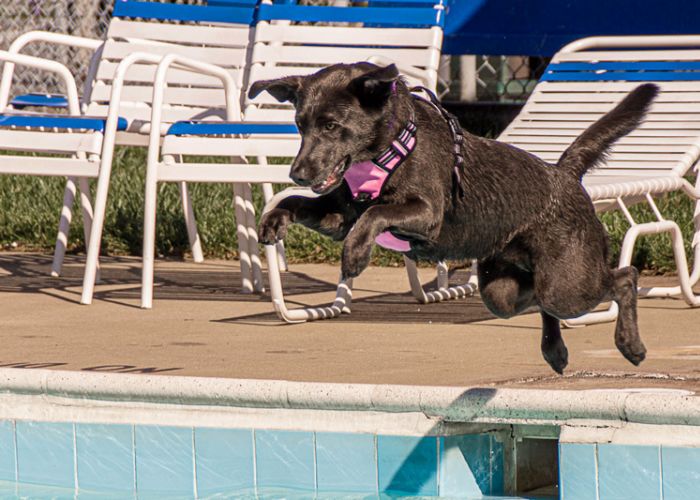Kindred spirits
Shelter programs focus on finding new homes for shy or frightened 'spirit' cats
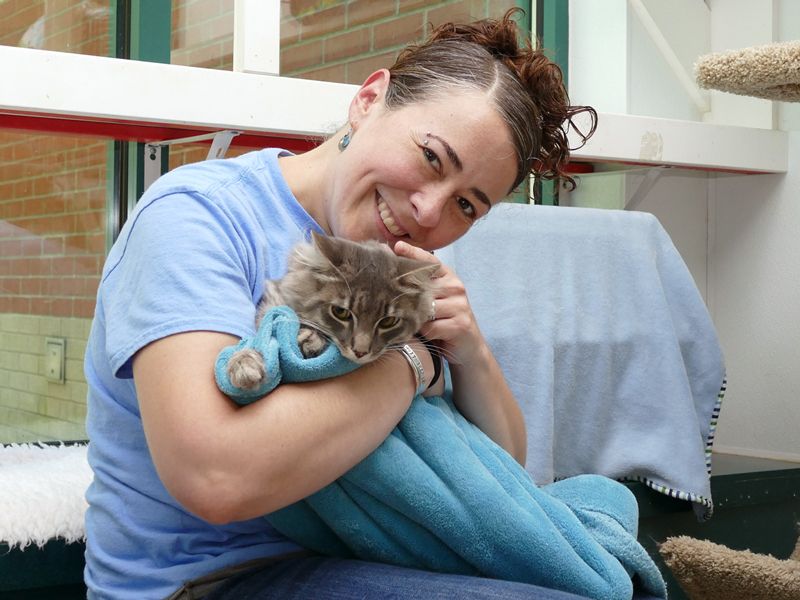
Vinnie Van Gogh, a reticent feline, spent four months at Dakin Humane Society before his photo appeared on the shelter’s website with the headline “The Socially Awkward Cat for the Socially Awkward Adopter.”
“Seriously all this guy requires is a couch and someone to give him his daily necessities,” the write-up by the Springfield, Massachusetts, shelter read. “Take him home, and have a perfect buddy for all those times that going out is just not worth the effort. He understands.”
Soon after the posting, a young couple adopted the 12-year-old black cat, who had been surrendered because of his owner’s failing health. “I kid you not, they came because of that write-up. They said it described them and that he would be the perfect fit,” recalls Alanna Regan, Dakin’s feline success coordinator.
Vinnie was a member of Dakin’s Spirit Cats program, which it launched in 2014 after receiving about 20 poorly socialized cats from a hoarding situation. Faced with an influx of introverts who spent most of their time hiding, shelter staff realized they needed a way to market animals who weren’t going to charm potential adopters with head butts and purrs.
There’s a niche of adopters who aren’t looking for lap-warmers, as well as those who enjoy the challenge of winning a shy animal’s trust.
Since then, nearly 400 spirit cats have found homes, and Dakin’s model has inspired other shelters to launch similar programs.
What these organizations have discovered is that there’s a niche of adopters who aren’t looking for lap-warmers, as well as those who enjoy the challenge of winning a shy animal’s trust. But it takes creative marketing to reach those potential adopters, as well as special accommodations, gentle training and socialization to lessen the cats’ stress in the shelter and coax them out of their shells.
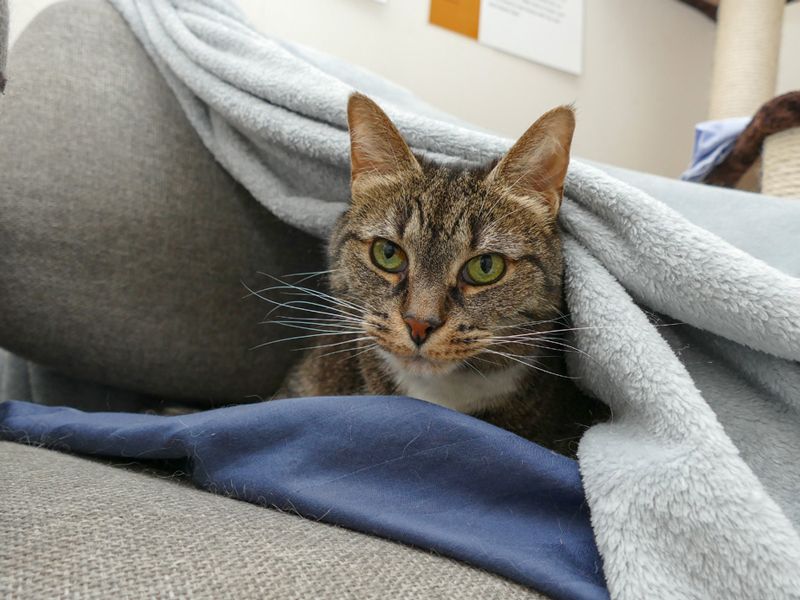

Getting into the spirit
When it comes to promoting shy types, a focus on the positives and transparency are key, says Regan. Dakin staff and volunteers emphasize that their spirit cats are probably best for people who are looking for a friend for their current cat or who work long hours and don’t have a lot of time to devote to a pet who craves 24/7 attention.
The program isn’t for human-aggressive cats or for adult ferals who’ve never lived indoors, Regan says. It’s primarily for cats who have lived with people but are too shy or shut down in the shelter to go through the normal adoption process. Spirit cats, Dakin’s website explains, “are cats who live with you, and who may sometimes grant you the opportunity to touch them. Or, they may not.”
Of course, cats from any type of home can show shy and nervous behavior, “even those with amazing in-home histories,” says Tammy Miller, feline coordinator for the Animal Care and Control Team of Philadelphia. Foster care is typically the best way to get the true measure of a cat’s personality, but when that’s not possible, shelters can often find ways to lessen the stress of fearful types and better assess their needs.
In ACCT Philly’s Time-to-Adjust program, owner-surrendered kitties who resist handling or show other concerning behaviors are housed in a quieter corner with signs encouraging potential adopters to talk to them in a low voice. The cats are given time to settle down before being examined by a veterinary nurse, and over the next few weeks, staff members evaluate the animals’ readiness to move to a regular adoption kennel.
Dakin houses most of its spirit cats in one of five cat colony rooms, where they can interact with human visitors on their own terms. For its shy cats, Monadnock Humane Society in Swanzey, New Hampshire, set aside a multicat room, which is removed from the bustle of the adoption floor and outfitted with cat calming pheromone plug-ins. Flyers on the door describe the program and the current residents, and a sign instructs visitors to enter quietly and greet the cats slowly.
“We tell people this is a room of really quiet cats and that there are actually 12 of them, not just the three that you see," says Ashley Okola, assistant manager at Monadnock.
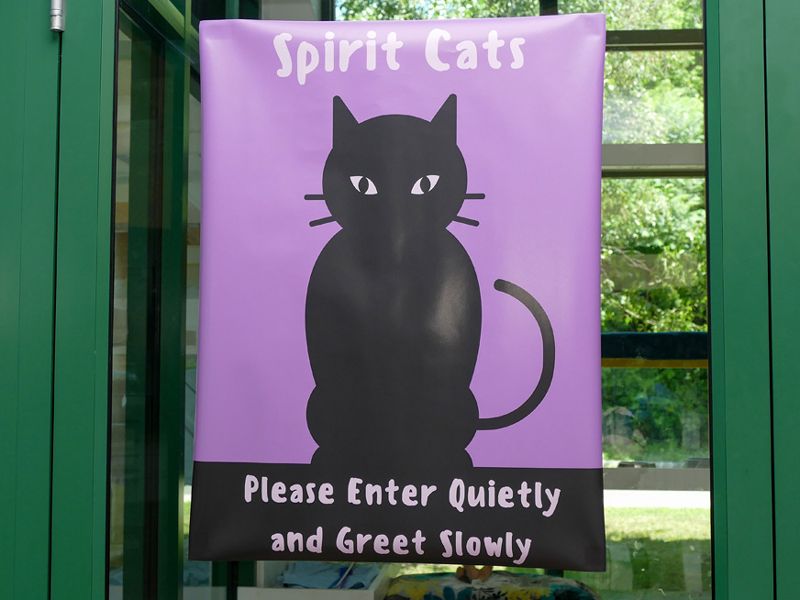
Spirited away
For shelters thinking of launching their own spirit cat programs, Regan recommends starting with cats who will be easiest to place, such as those who are under 6 years of age, are healthy, have no other behavioral problems such as house soiling, and were “pretty normal” in a home but act differently in the shelter. In general, you’ll know if the program is working if the cats are getting adopted quickly— within a month—and you’re receiving positive feedback from adopters.
A dedicated volunteer corps is another key to success: They can monitor the cats’ eating habits and provide the one-on-one attention that enables some spirit cats to “upgrade” to the regular adoption program. Dakin volunteers use clicker training (based on the Jackson Galaxy Project’s Cat Pawsitive model) to boost the cats’ confidence and toothbrushes or back scratchers to acclimate them to petting. The shelter also encourages volunteers and staff to just hang out in the cats’ space—singing, reading out loud, having meetings or doing everyday office tasks to get the cats used to people. At ACCT Philly, volunteers with the Kneady Cat Club provide enrichment for and extra promotion of the shelter’s “kneadiest” cats, including those who are shy or shut-down.
“The end result is to get these kitties into a home that understands what they need, which really is patience,” Regan says. That means the patience to give shy cats time to adjust to a new environment and the patience to accept them for who they are once they’ve settled in.
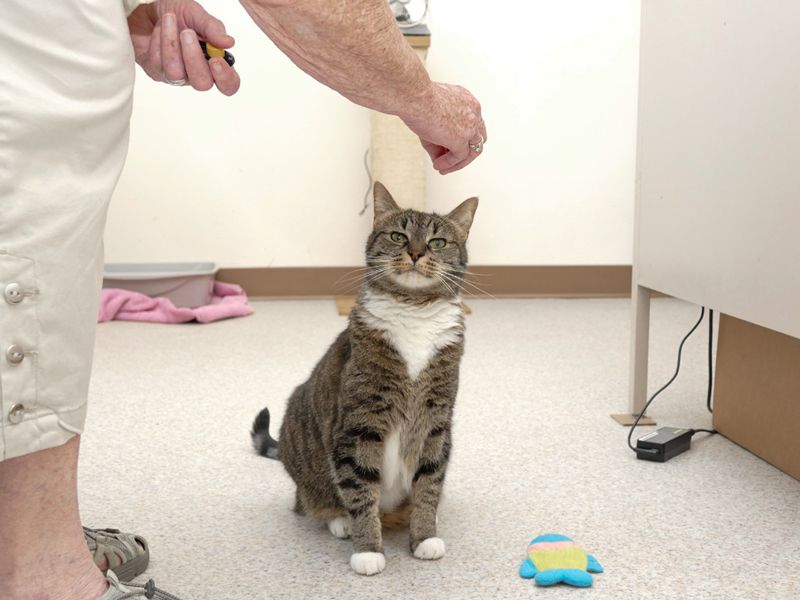
This unpredictability is part of what makes spirit cats special. In follow-up conversations with adopters, the Dakin team has learned that once in their new homes, these reserved felines often transform beyond expectations. “Super loving and affectionate,” one adopter said of former spirit cat Boo, adding that he “follows you around like a dog.”
Back at the shelter, around closing time, staff members get a hint of those hidden personalities. At the end of each day, as the lights start going off and staff begin their final cleanup tasks, an interesting thing happens.
“That’s when you’ll start seeing the spirit cats creeping out of their carriers and checking things out, messing with each other and playing,” Regan says. “It's funny.”


